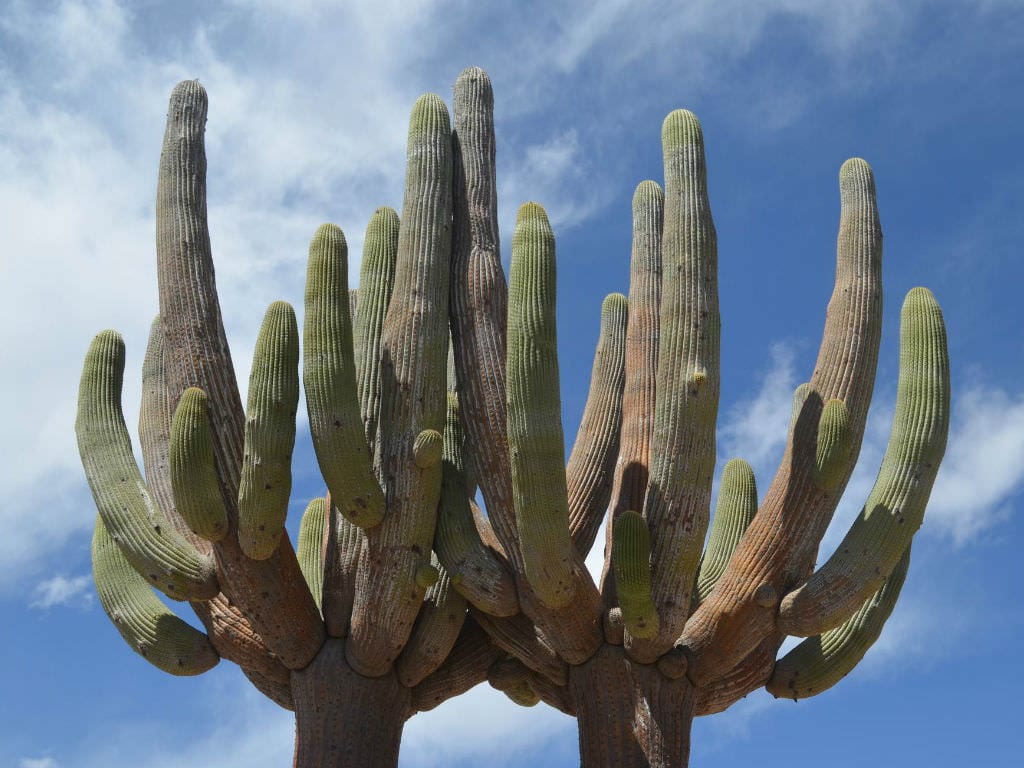
Image - Worldofsucculents.com
The candelabra cactus is a gem of the American desert. Although it has a fairly slow growth rate, it is an easy-to-grow species that drives all lovers of thorny succulents crazy that also have arboreal bearing.
If you have a large site and want to show off your garden, don't hesitate, get one browningia candelaris, who I'll take care of leaving you his business card.

The candelabra cactus, whose scientific name is browningia candelaris, It is a species of the cacti family endemic to the highlands of Chile and Peru.. It was first described in 1833 as Cereus candelaris by the German botanist Franz Julius Ferdinand Meyen. In 1920, Brittonn and Rose placed it in the genus Browningia.
It grows between 1700 and 3000 meters above sea level. Reaches a height of up to 5 meters, and has a branched and well-armed arboreal bearing with straight brown thorns whose length is 6-15cm. The highest branches may or may not have thorns. They all have about 50 ribs. Its trunk is straight, with a thickness of up to 50 centimeters.
The flowers are tubular, white, 8-12cm long, and diurnal.. Once they are pollinated, the fruits begin to ripen, which will end up being edible.

If we talk about its care, we have to say that it is a somewhat delicate species. Needs sunny exposures in order to grow, and a substrate that has excellent drainage since it does not tolerate waterlogging. In addition, we should not water it in excess, only when the ground is very dry.
Being slow growing, we can grow it for many years in a pot, which will undoubtedly be good news for those who live in areas where winter is cool, as this wonder of cactus does not resist frost.